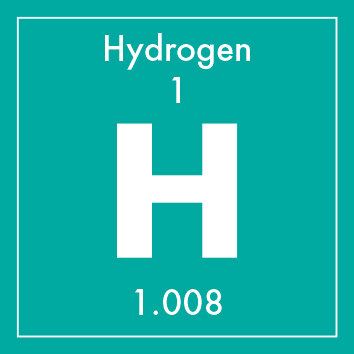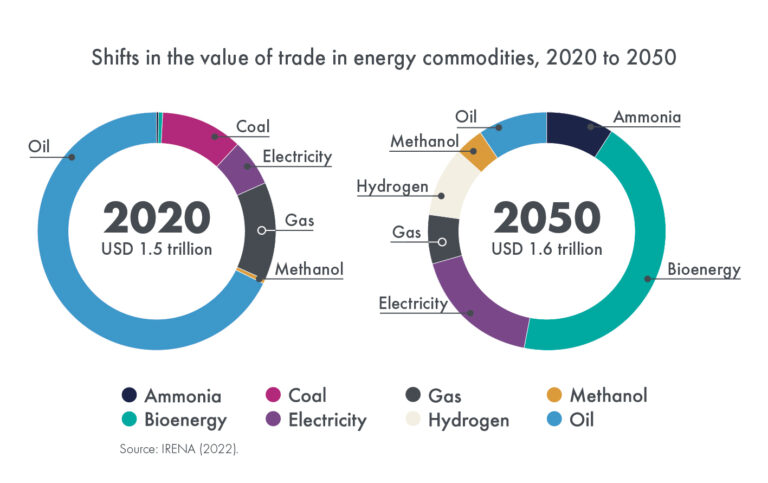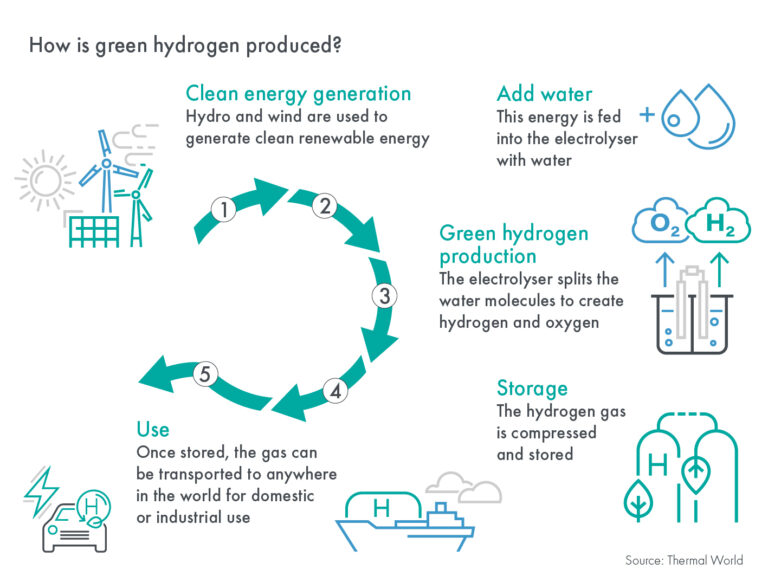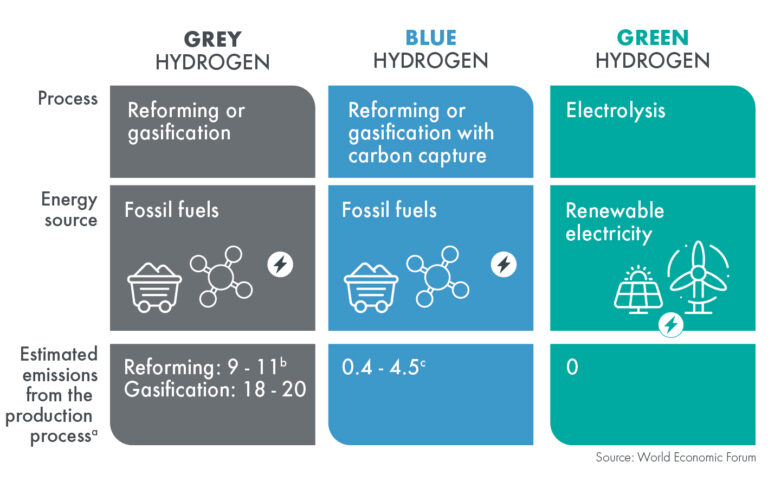Think of Hydrogen. Its symbol is H2 with the atomic number 1. It is the most abundant chemical substance in the universe, constituting 75% of all normal matter. It is colorless, odorless, tasteless, non-toxic, and highly combustible. It is also an alternative fuel that can may in fact be the key to a low-carbon future for all of us.

At the recent Economist Impact Sustainability Week event held in Washington DC – Heather Boushey who is a member of the Council of Economic Advisors and Chief Economist for the Investing in America at the White House remarked that “Hydrogen is a hot topic when it comes to combating climate change.” Many may ask what exactly is clean hydrogen (and why is it a good thing) in terms of producing energy for the US in the future?
Boushey was likely front-running an announcement that was made a few days later by the Department of Energy: US National Clean Hydrogen Strategy and Roadmap. According to the news release the program is “A comprehensive framework for accelerating the production, processing, delivery, storage, and use of clean hydrogen—a versatile and flexible energy carrier that can be produced with low or zero carbon emissions.”
The release when on to say “Clean hydrogen is set to play a vital future role in reducing emissions from some of the most energy-intensive sectors of our economy, including industrial and chemical processes and heavy-duty transportation. Clean hydrogen can also support the expansion of variable renewable power by providing a means for long-duration energy storage and offers flexibility and multiple revenue streams for all types of clean power generation—including renewables, advanced nuclear, and other innovative technologies.”
The plan builds off the $9.5 billion set aside by the Bipartisan Infrastructure Law to fund green hydrogen cheaper for emissions-heavy industries, including steel production, heavy-duty transportation, and long-duration energy storage.
The roadmap emphasizes three key strategies for success: high impact uses for clean hydrogen, reducing the cost of clean hydrogen, and the development of regional clean hydrogen networks. To achieve these ends, the DOE will “collaborate with industry, academia, national laboratories, local and Tribal communities, the energy and environmental justice communities, labor unions, and numerous stakeholder groups to accelerate progress and market liftoff.”
The geopolitics of the hydrogen energy transformation have been examined by the International Renewable Energy Agency. They call hydrogen “the missing piece of the clean energy puzzle…likely to further disrupt energy value chains in coming years.” As clean hydrogen becomes more economically viable and other clean energy sources become more prominent, it is projected that there will be significant shifts in the value of trade in energy commodities between 2020 and 2050:

How is Clean Hydrogen Produced?
Clean hydrogen, produced from renewable sources like solar or wind power, or low-carbon methods with carbon capture and storage (CCS), ensures that the energy generated from these processes is environmentally friendly.

How is Clean Hydrogen Used to Produce Energy?
Clean hydrogen is then used to produce energy primarily through two methods: fuel cells and combustion. Both approaches leverage the environmental benefits of clean hydrogen production to generate energy while minimizing greenhouse gas emissions.
Hydrogen Fuel Cells:
Fuel cells are electrochemical devices that convert the chemical energy of hydrogen and oxygen into electricity. In a hydrogen fuel cell, hydrogen gas (H2) is supplied to the anode, while oxygen (usually from air) is supplied to the cathode. At the anode, hydrogen molecules are split into protons (H+) and electrons (e^-).
The protons pass through an electrolyte, while the electrons flow through an external circuit, creating an electric current. At the cathode, the protons and electrons combine with oxygen, forming water (H2O) as the only byproduct.
This process produces electricity without combustion and emits no greenhouse gases or pollutants. Fuel cells are highly efficient, quiet, and suitable for a range of applications, including transportation (electric vehicles), stationary power generation, and portable devices.
Combustion:
Clean hydrogen can be combusted in engines, turbines, or boilers to generate heat and mechanical energy. When hydrogen is burned in combustion engines, it reacts with oxygen in the air, producing high-temperature steam and no carbon dioxide (CO2) emissions. The steam can be used to drive turbines, which generate mechanical energy to produce electricity.
Hydrogen Blending:
Clean hydrogen can also be blended with natural gas and used in existing natural gas power plants or heating systems. This blend, known as “hydrogen-enriched natural gas,” reduces the carbon intensity of the fuel and lowers greenhouse gas emissions without requiring significant modifications to existing infrastructure.
As John Kerry – Former Senator and Secretary of State and currently the Special Presidential Envoy for Climate noted “Hydrogen is an incredibly versatile energy carrier and feedstock that can be used across every sector of our economy. When we produce hydrogen cleanly using renewables, or fossil fuels with carbon capture it can tackle some of the hardest to decarbonize sectors of our economy. In fact, it can do so much it has been called the Swiss Army Knife of clean energy solutions.” Is this an over-promise? Perhaps not.
Benefits of Clean Hydrogen Energy
Decarbonization: Clean hydrogen can play a vital role in decarbonizing various sectors that are challenging to electrify directly, such as heavy industry, long-haul transportation, and certain heating applications. By substituting fossil fuels with hydrogen, emissions of greenhouse gases and air pollutants can be significantly reduced, mitigating climate change, and improving air quality.
Energy Storage and Grid Balancing: Hydrogen can serve as a form of energy storage, helping to address the intermittent nature of renewable energy sources like wind and solar power. Excess electricity generated during periods of low demand can be used to produce hydrogen through electrolysis, which can be stored and later converted back into electricity or used for other purposes when needed. This enhances the stability and reliability of the electrical grid.
Energy Carrier and Flexibility: Hydrogen is a versatile energy carrier that can be used in various applications. It can be combusted in fuel cells to produce electricity and heat, used directly in industrial processes, or blended with natural gas in existing infrastructure. This flexibility allows for the integration of hydrogen into different sectors and energy systems, offering more options for sustainable energy use.
Energy Independence and Security: Clean hydrogen can help enhance energy independence by diversifying energy sources. It can be produced domestically from renewable resources, reducing reliance on imported fossil fuels, and increasing energy security.
Job Creation and Economic Opportunities: The development of a clean hydrogen industry can lead to significant job creation and economic growth. The production, storage, distribution, and utilization of hydrogen require specialized expertise and infrastructure, generating employment opportunities across various sectors and driving innovation and investment. Some sources claim that hydrogen could generate up to 30 million jobs by 2050, and boost economies worldwide by $2.5 trillion per year.
Technological Innovation: The pursuit of clean hydrogen technologies fosters research and development efforts, leading to advancements in areas such as electrolysis, fuel cells, hydrogen storage, and hydrogen infrastructure. These technological innovations have the potential for spill-over effects in other industries, driving progress towards a more sustainable low-carbon future.
Drawbacks of Hydrogen
Research has found that clean hydrogen still costs too much to enable it to be widely deployed. Some estimates indicate that prices will not come down to support widespread use until the 2030s. But there are indications that it could be more affordable sooner than expected.
Where hydrogen comes from is important. Currently it is mainly produced on an industrial level from natural gas, which throws off significant carbon emissions. This type of hydrogen is known as “grey” hydrogen.
A cleaner version known as “blue hydrogen” uses production processes where carbo emissions are captured and stored or reused. The cleanest of all is “green” or clean hydrogen which is generated using renewable energy resources (like wind or solar) without producing carbon emissions at all.

But not everyone is convinced that green hydrogen is the fuel of the future. Some environmentalists doubt the promised green virtues of this approach. “We can’t tackle the climate crisis by consuming the same amount of energy and just burning different fuels. Energy savings, changing energy use and electrification of as much heating, transport, and industry as possible, should be at the core of our energy plans,” said Silvia Pastorelli, a climate and energy campaigner at Greenpeace.
Some feel that technologies for producing green hydrogen are still nascent and the whole process is very expensive. Today, green hydrogen cannot compete with other energy sources, or with grey hydrogen produced from fossil fuels on a cost basis. Still other cite the issue of how to safely store green hydrogen – hydrogen has a wide range of flammable concentrations in air and lower ignition energy than gasoline or natural gas, which means it can ignite more easily.
The Sierra Club has likely the most sensible view on the use of hydrogen as a future energy source. They support the use of green hydrogen based on several conditions, including:
– Green hydrogen is a promising solution only for uses that cannot otherwise directly rely on clean electricity, which is much more efficient.
– Green hydrogen should not be used to justify a buildout of facilities that otherwise increase pollution or fossil fuel use.
– If green hydrogen is being used, the goal should be to switch to 100 percent green hydrogen once the technology is available. We should not support projects that label themselves as “sustainable” because their fuel source includes a small fraction of hydrogen when the lion’s share of it is fracked gas.
They also pose some thought-provoking criteria on how to tell good hydrogen from bad:
– Does the proposed project rely on green hydrogen? If so, is it exclusively considering green hydrogen, or is it considering an eventual switch to green hydrogen?
– Is producing green hydrogen from renewables necessary, or could renewables instead be used to provide power directly (or through electrification of end uses)?
– Does the use of hydrogen for this purpose preclude meeting energy needs through a lower-emission or lower-cost pathway?
– Is green hydrogen being produced on-site? Is there appropriate infrastructure for transporting and storing the fuel that will not create environmental justice concerns, and can guarantee it will not be comingled with grey or blue hydrogen?
– If a project is proposing to use green hydrogen blended with gas in existing infrastructure, is there a clear and enforceable commitment to using 100% green hydrogen in the future? Or is the real purpose to extend the life of a fossil gas infrastructure?
It is important to consider that widespread adoption of green hydrogen still faces some challenges. These include the high cost of electrolysis, the need for significant renewable energy capacity to produce large amounts of green hydrogen, and the need to build infrastructure for hydrogen transportation and storage. Nevertheless, ongoing research, technological advancements, and supportive policies are expected to contribute to the growth of green hydrogen as a viable low-carbon energy source in the coming years.
Share and tag us @alwaysbecontent








